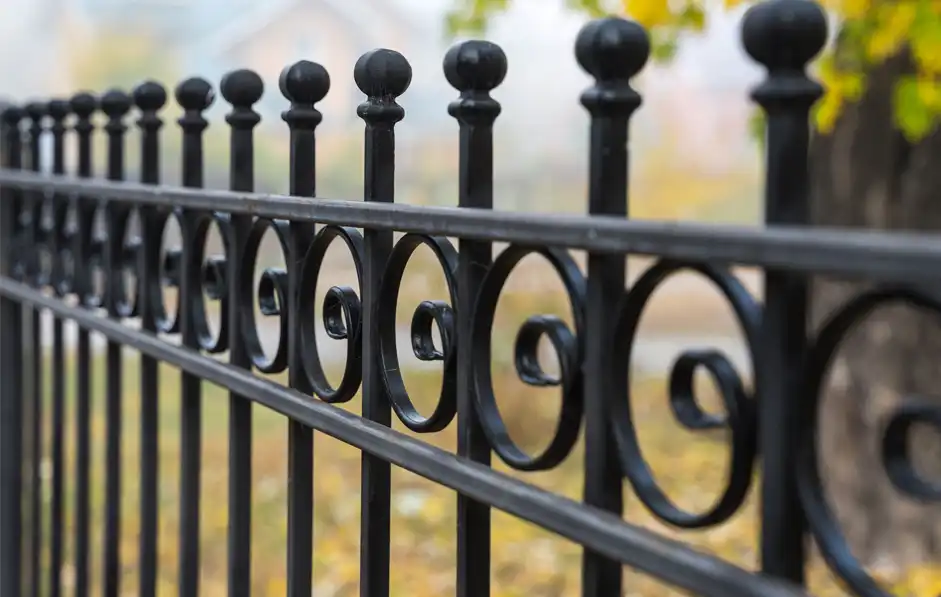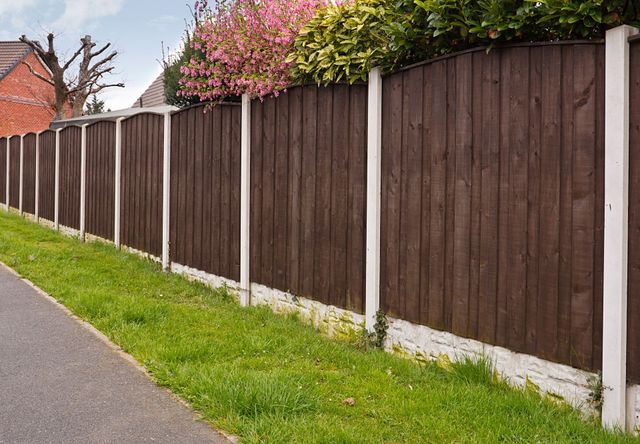Featured

Choosing the right type of fence for your home is a substantial choice that can impact both the aesthetics and capability of your space. Whether you're looking for personal privacy, safety and security, or simply a decorative feature, there are various aspects to think about when picking the optimal fence. Below are some essential considerations to aid assist your decision-making procedure.
- Determine the Purpose of the Fence. The primary step in selecting the appropriate type of fence is to clarify its objective. Various fences serve different functions, and understanding your certain requirements will certainly assist limit your options. Consider the following:
Privacy: If you're seeking privacy, a solid and tall fence such as wood or vinyl will protect against spying eyes from seeing into your yard. Safety and security: For safety objectives, a solid, high fence constructed from aluminum or steel can discourage intruders and supply tranquility of mind. Visual Charm: An attractive fence made from functioned iron, aluminum, or picket-style wood can include charm and aesthetic attract your residential or commercial property. Pet or Animal Control: If you need to include animals or livestock, a durable fence like chain link or timber might be needed to stop them from leaving. 2. Consider the Product. It's time to pick the material once you've developed the fence's key objective. Each sort of product comes with its own collection of advantages and difficulties. Here are some common materials to think about:
Wood: Wood fencings are adjustable and versatile, supplying personal privacy and a timeless appearance. They're perfect for rural homes or traditional homes however require routine upkeep to avoid bending, rot, or bug problem. Plastic: Plastic fences are low-maintenance, durable, and available in a selection of styles. They will not crack, warp, or fade, making them a great choice for those who desire a lasting, easy fence. Nevertheless, plastic can be extra costly in advance than wood. Light weight aluminum: Aluminum fences supply a sleek, modern appearance and are sturdy, rust-resistant, and need very little maintenance. They normally do not offer as much privacy as timber or plastic, as the slats are commonly spaced apart. Chain Link: Wire mesh fence are commonly utilized for safety and security or to have animals. They are durable and cost effective, however they do not give much privacy or aesthetic charm unless you include slats or personal privacy displays. 3. Consider the Environment and Upkeep Needs. Your region's environment can considerably affect the lifespan and maintenance requirements of your fencing. If you stay in an area with high humidity or frequent rain, materials like wood might need additional care to protect against rot or mold and mildew development. On the other hand, vinyl and light weight aluminum fencings are immune to the elements and require a lot less maintenance.
Additionally, think about the amount of time and effort you're eager to dedicate to fence maintenance. Wood fences require normal staining or painting to keep their look, while plastic and aluminum need much much less upkeep.
- Consider Sturdiness and Life expectancy. Think about for how long you desire your fence to last. If you're trying to find a fencing that will last for decades with little maintenance, vinyl and light weight aluminum are excellent options. While timber fences can last 10-20 years with proper treatment, they may not hold up against the test of time along with various other materials.
Also, consider your budget. Products like timber and chain web link often tend to be more cost effective upfront, while vinyl and aluminum often tend ahead with a greater preliminary expense yet offer long-lasting durability.
- Suit the Fencing to Your Building Style. The kind of fencing you select need to complement the total feel and look of your residential property. An appropriate fence can improve your home's aesthetic allure, while a poorly selected fencing can interfere with it. As an example:
Typical Houses: A classic timber picket fencing or a functioned iron fence works well with older, more traditional homes. Modern Homes: For a modern look, smooth products like aluminum or vinyl can match modern-day architecture. Country or Ranch Characteristics: A wooden or cord fencing might be excellent for country buildings or farms, where usefulness is equally as important as aesthetics. 6. Inspect Neighborhood Regulations and HOA Guidelines. Prior to making your decision, inspect your local zoning guidelines and any kind of HOA (Homeowners Association) standards to make certain that your wanted fencing abide by elevation limitations, material needs, and various other local regulations. Some areas have specific policies about the appearance of fencings, especially in household communities.

Conclusion. Choosing the right fence for your home needs careful factor to consider of your needs, spending plan, and the style of your home. Whether you're focusing on personal privacy, protection, or visual charm, there's a fence material and style that will fit your requirements. By taking into consideration the factors described above, you can make an educated choice and select a fence that will enhance the capability and elegance of your home for years to come.
Latest Posts
Discover the Leading Auto Repair Coupons in Montclare, Chicago
Published May 30, 25
1 min read
Find Premier Auto Repair Solutions in Chicago – Expert Care for Your Vehicle
Published May 25, 25
1 min read
Find Oil Changes & More: Comprehensive Auto Care Solutions from Montclare Auto Repair
Published May 24, 25
1 min read
More
Latest Posts
Discover the Leading Auto Repair Coupons in Montclare, Chicago
Published May 30, 25
1 min read
Find Premier Auto Repair Solutions in Chicago – Expert Care for Your Vehicle
Published May 25, 25
1 min read
Find Oil Changes & More: Comprehensive Auto Care Solutions from Montclare Auto Repair
Published May 24, 25
1 min read